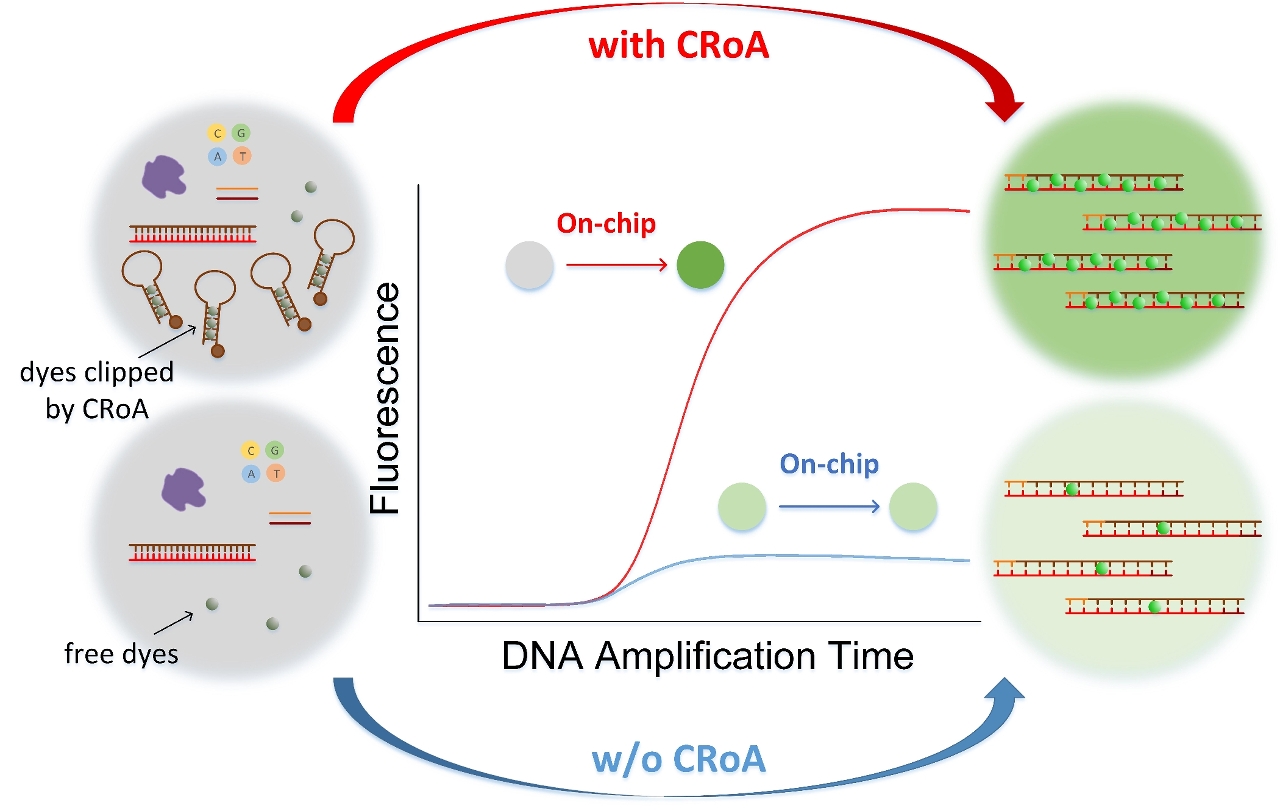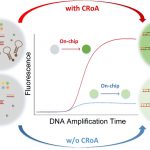 UM achieves new breakthrough in nucleic acid analysis technique
UM achieves new breakthrough in nucleic acid analysis technique
The University of Macau (UM) recently made new progress in nucleic acid analysis techniques. A research team from UM’s Institute of Microelectronics proposed a novel DNA amplification enhancer to significantly improve the performance of DNA amplification methods in both benchtop assays and on-chip assays in microfluidic devices. This enhancer would allow users to observe, with the naked eye, the results of nucleic acid amplification tests for different kinds of viruses, such as the novel coronavirus, thereby facilitating fast, portable virus testing for large populations. The study has been published in the well-known international journal Lab on a Chip. The article was selected as featured paper to appear in the back cover of the journal.
Double-stranded DNA binding dyes have a long glorious history as a DNA amplification indicator due to its high sensitivity, low cost, and high efficiency. However, technological advances in molecular diagnostics are making greater demands on DNA indicators—they are expected to tell more details on the sequence information and work robustly in small-volume reactions on microfluidics. But the intrinsic characteristic of dsDNA dyes inhibiting amplification at high concentrations has greatly limited its applications in nucleic acid related techniques.
Titled ‘Clip-to-release on Amplification (CRoA): A Novel DNA Amplification Enhancer On and Off Microfluidics’, the article proposes a smart strategy to counteract the drawbacks of these DNA indicators in DNA amplification techniques such as the polymerase chain reaction (PCR). The team designed and optimised an enhancer named ‘CRoA’, which is a hairpin-structured oligonucleotide with a 3′ quencher. The double-stranded stem acts as a reservoir and shelter for dye molecules and the quencher quenches out the fluorescence from the stocked dye. As amplification proceeds, the dye molecules can hop from the temporary stem reservoir to longer target amplicons. The CRoA enhancer can not only restore and enhance the dyes' signal for on-chip PCR, but can also increase the amplification efficiency at a high dye concentration. Based on this mechanism, the proposed enhancer can broaden the dynamic range of dsDNAbinding dyes, as well as improve the amplification performance and reliability of the results in both on-chip and off-chip amplification systems.
According to authors of the article, the incorporation of CRoA into the DNA amplification system can greatly expand the application of inexpensive dsDNA binding dyes so they can accomplish many tasks that were previously considered ‘missions-impossible’, such as high-resolution melting analysis, naked-eye observations of DNA amplification, and quick yes/no DNA detection on microfluidics. The team has filed for a United States patent and a Chinese patent for the invention.
The study was jointly supported by the Macao Science and Technology Development Fund (FDCT) [110/2016/A3, 0053/2019/A1, AMSV SKL Fund], UM’s research fund [MYRG2017/00022/AMSV, MYRG2018/00114/AMSV], and DAAN Gene Co., Ltd. [EF009/AMSV-JYW/2018/GSTIC]. Assistant Professor Jia Yanwei is the corresponding author of the article and PhD student Shen Ren is the first author. Prof Mak Pui-In and Prof Rui Martins also made important contributions to this study. For more information about the study, please visit: https://pubs.rsc.org/en/content/articlelanding/2020/LC/D0LC00318B#!divAbstract


